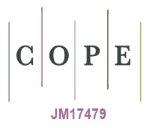The antimicrobial activity of some medical plants against bacteria that cause urinary tract infection
DOI:
https://doi.org/10.23851/mjs.v28i3.177Keywords:
Medicinal plant, Antimicrobial, Antioxidant, kill time, cytotoxic activity.Abstract
This study was done to evaluate the antibacterial activity of hot ethanolic and aqueous extracts of Syzygium aromatic (S.aromatic ) and Q.infectoria infectoria (gall) against pathogenic bacteria that cause urinary tract infection (UTI). Such as Escherichia coli, Staphylococcus aureus, and Pseudomonas aeruginosa. Qualitative detection of the active compounds of the plant extracts was done with chemical reagents. Also, the Qualitative detection of the active groups was further verified with (FTIR). The sensitivity of the UTI causing bacteria was examined against 12 different antibiotics. The results show that E.coli was the most resistant bacteria, resisting 8 from 12 antibiotics; P.aeruginosa resisted 5 from 12 antibiotics; while S.aureus showed resistance to 4 only. The antibacterial activity of the plant extracts was investigated by using four concentrations (40, 60, 80, 100 mg/ml) for each extract against two types of Gram negative bacteria (E.coli, P.aeruginosa), and one type of Gram-positive bacteria (S. aureus). The plant extracts showed different effects on the growth of all bacterial strains. The Minimum Inhibitory Concentration (MIC) and the Minimum bactericidal concentration (MBC) of the ethanolic extracts and aqueous extracts in the study were determined.The kill- time was determined also for each extract.The antioxidant activity of the plants in the study was investigated. Finally, the toxicity of the plant extracts was examined on human red blood cells.Downloads
Download data is not yet available.
Downloads
Key Dates
Published
28-07-2018
Issue
Section
Original Article
License
(Starting May 5, 2024) Authors retain copyright and grant the journal right of first publication with the work simultaneously licensed under a Creative Commons Attribution (CC-BY) 4.0 License that allows others to share the work with an acknowledgement of the work’s authorship and initial publication in this journal.
How to Cite
[1]
N. hussein and noor ameer hanon, “The antimicrobial activity of some medical plants against bacteria that cause urinary tract infection”, Al-Mustansiriyah J. Sci., vol. 28, no. 3, pp. 72–84, Jul. 2018, doi: 10.23851/mjs.v28i3.177.






















